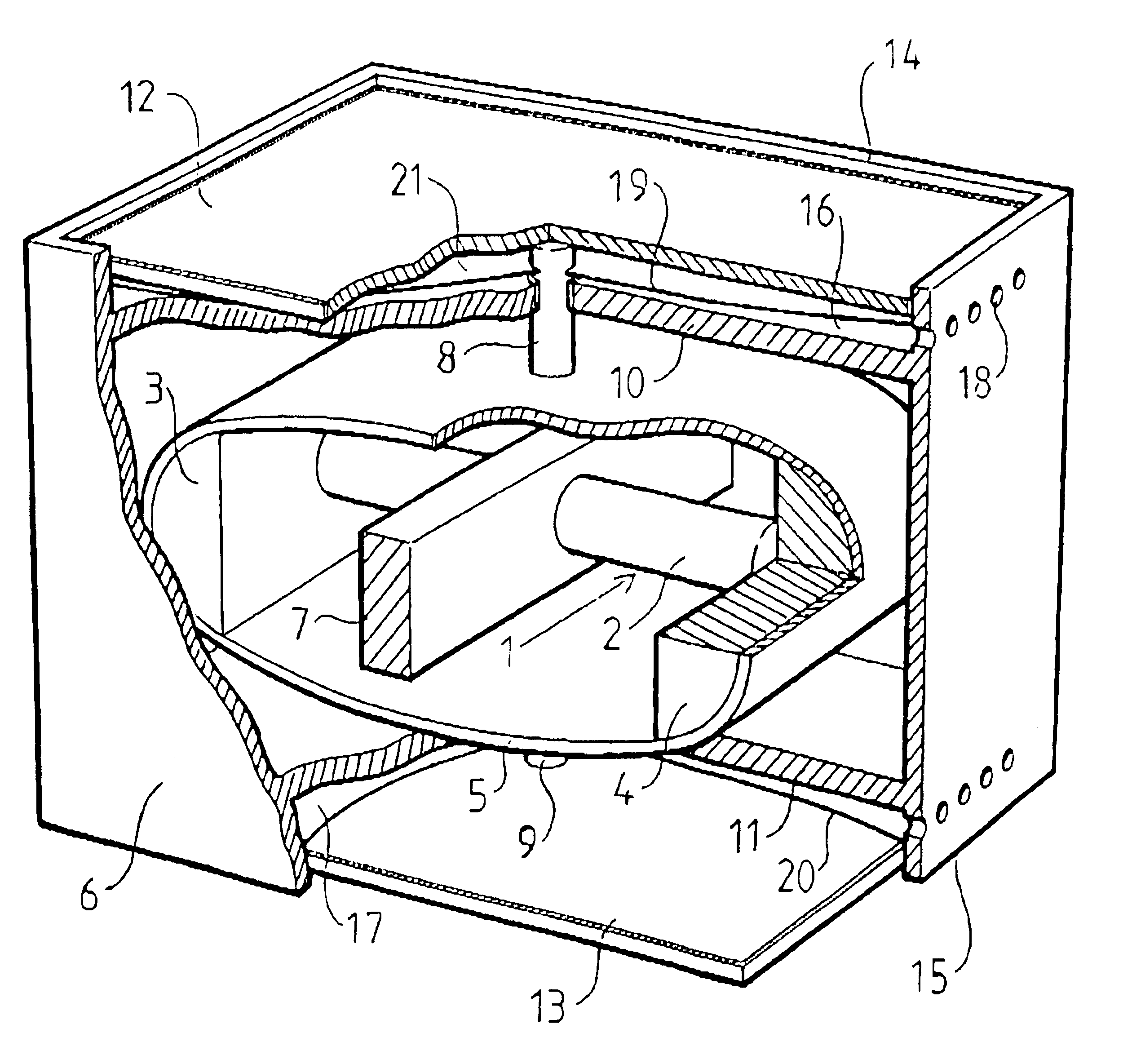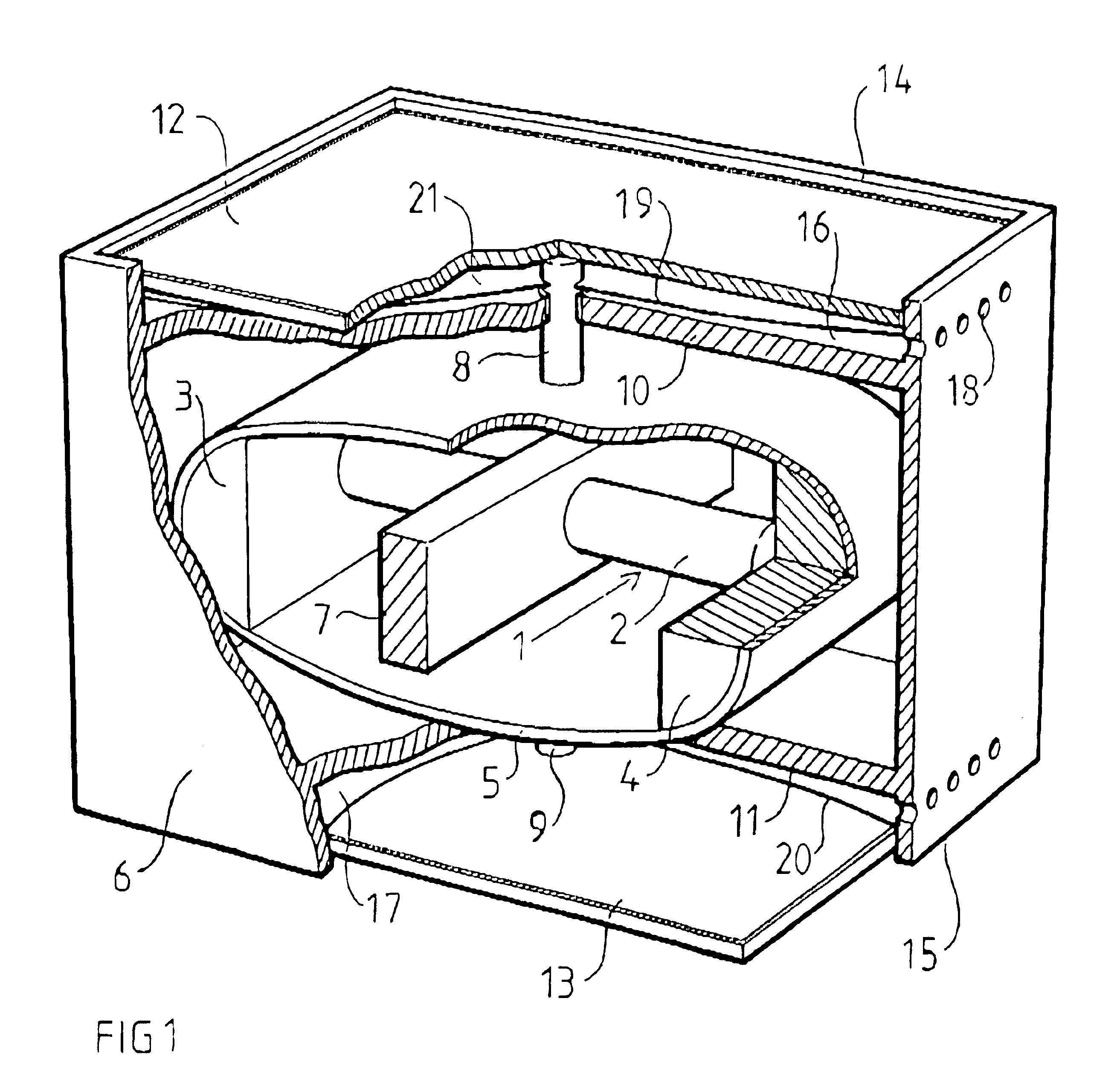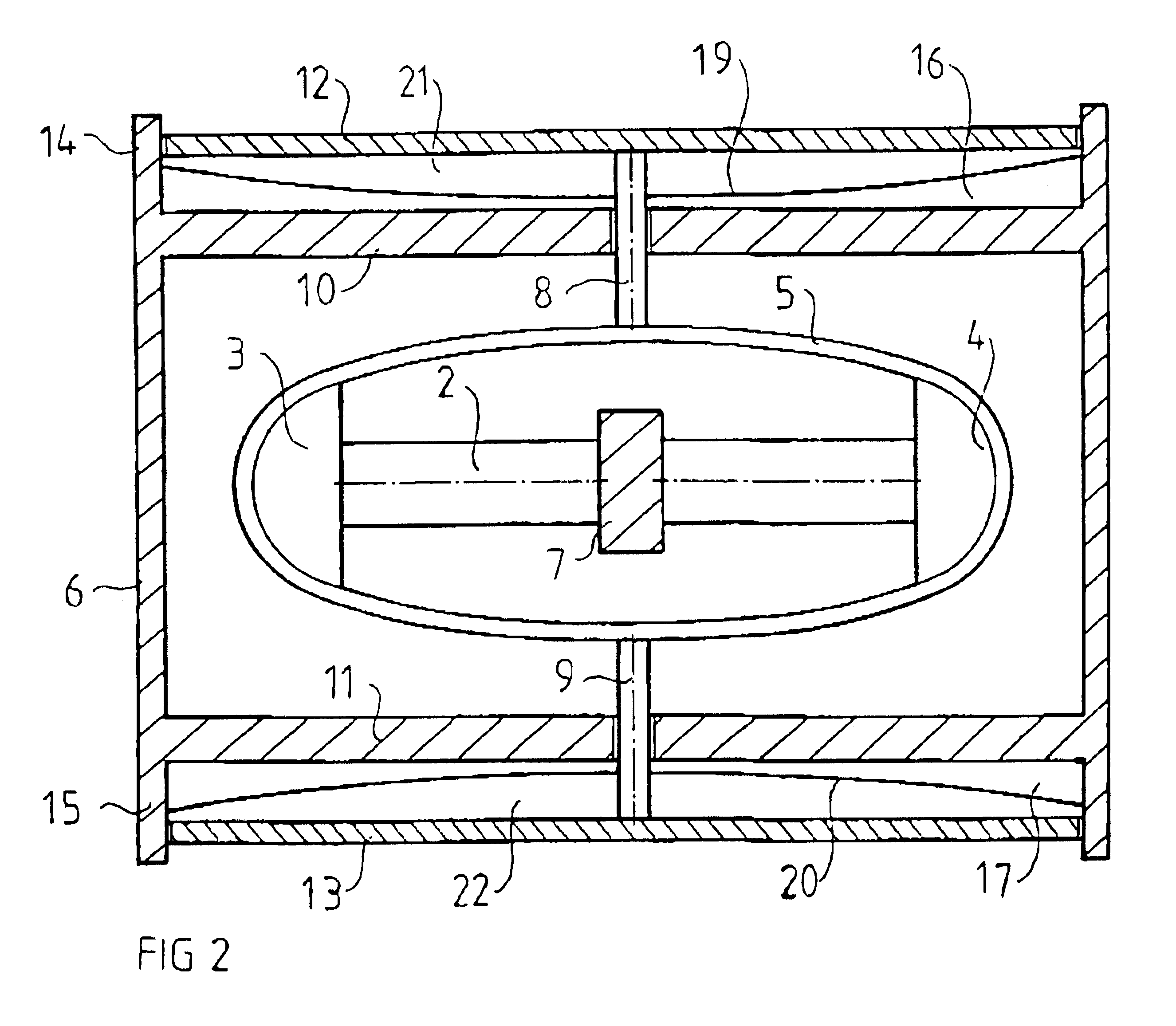Driving device for a hydroacoustic transmitter
a technology of driving device and hydroacoustic transmitter, which is applied in the direction of sound producing device, mechanical vibration separation, instruments, etc., can solve the problems of transmitters having difficulty in generating high amplitudes below 100 hz, the device efficiency is strongly reduced at such frequencies, and the shell presents a number of oscillation modes
- Summary
- Abstract
- Description
- Claims
- Application Information
AI Technical Summary
Benefits of technology
Problems solved by technology
Method used
Image
Examples
first embodiment
FIGS. 1 and 2 disclose the device according to the invention. The device includes here an actuating element 1 formed by a piezoelectric or preferably a magnetostrictive actuator. Alternatively, the device can include more actuating elements 1 to provide the device with better stability and balance. Known per se, the actuator includes a magnetostrictive or piezoelectric rod 2 of a material suitable for the purpose. Such a rod can be divided into several shorter sections in cases where it is considered suitable. In the disclosed embodiment, the actuating element is a magnetostrictive actuator with a magnetostrictive rod 2. Known per se, such an actuator includes means (not shown) for application of a magnetic field on the rod 2, so that it is elongated and shortened, respectively, in its longitudinal direction, i.e. oscillates. However, other types of actuating elements, with which a pulsating change of length can be accomplished, are also possible.
At two opposite ends of the actuatin...
second embodiment
For instance, the beams 29 in the second embodiment may be considered as transmissions elements, while the shell 30 solely is considered as a displacement element.
The number of actuating elements 1, rods 2, 23, 24, transmission elements 8, 9, etc. should in each individual case be optimized with respect to the rest of the design and operation conditions of the device.
The term structure should be seen in a wide sense and primarily include all constructions / components which, when connected to the actuating element in the described manner, may accomplish a transmission ratio of the movement of the actuating element. For instance, it can include a hinge mechanism.
PUM
 Login to View More
Login to View More Abstract
Description
Claims
Application Information
 Login to View More
Login to View More - R&D
- Intellectual Property
- Life Sciences
- Materials
- Tech Scout
- Unparalleled Data Quality
- Higher Quality Content
- 60% Fewer Hallucinations
Browse by: Latest US Patents, China's latest patents, Technical Efficacy Thesaurus, Application Domain, Technology Topic, Popular Technical Reports.
© 2025 PatSnap. All rights reserved.Legal|Privacy policy|Modern Slavery Act Transparency Statement|Sitemap|About US| Contact US: help@patsnap.com



